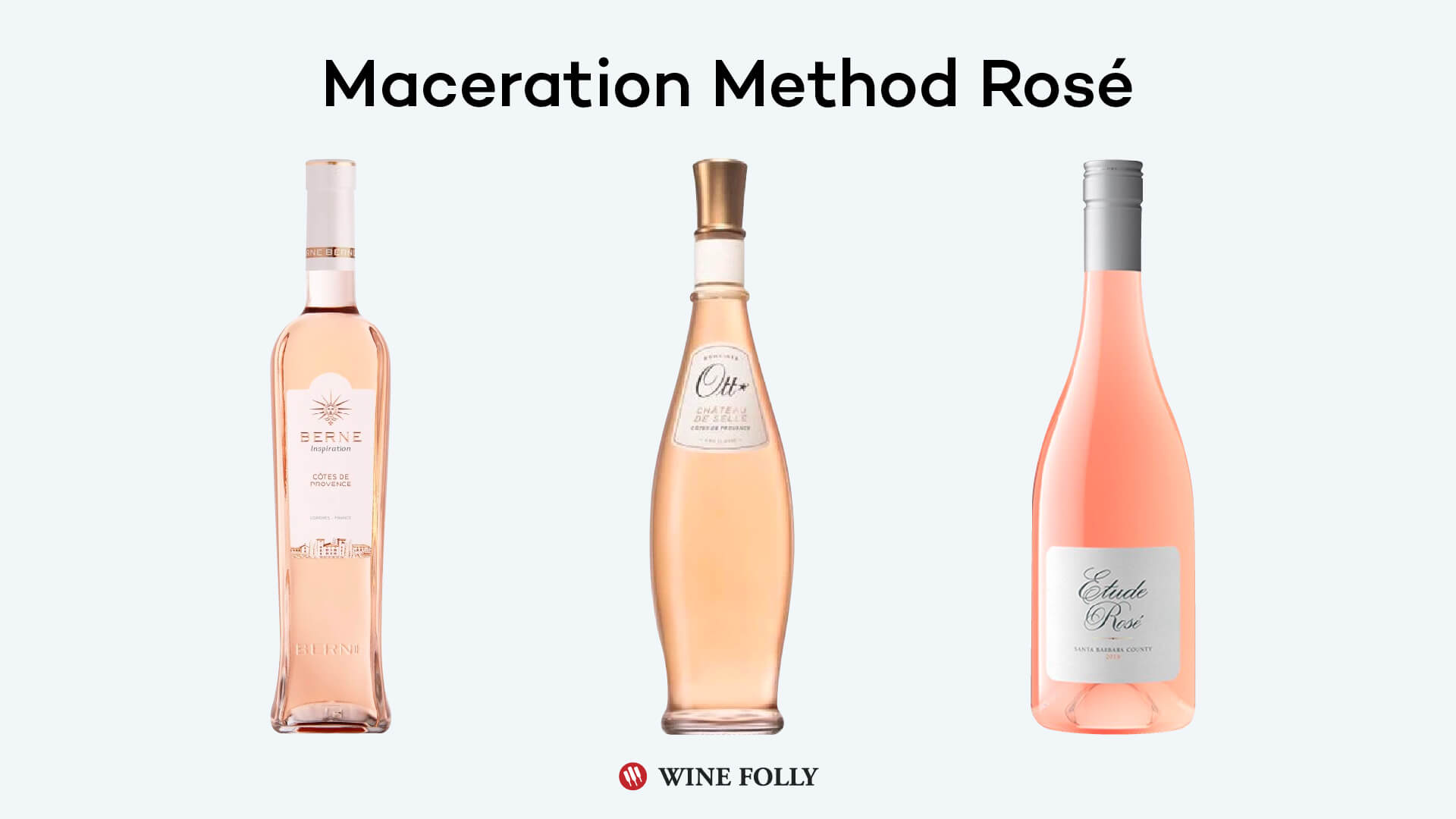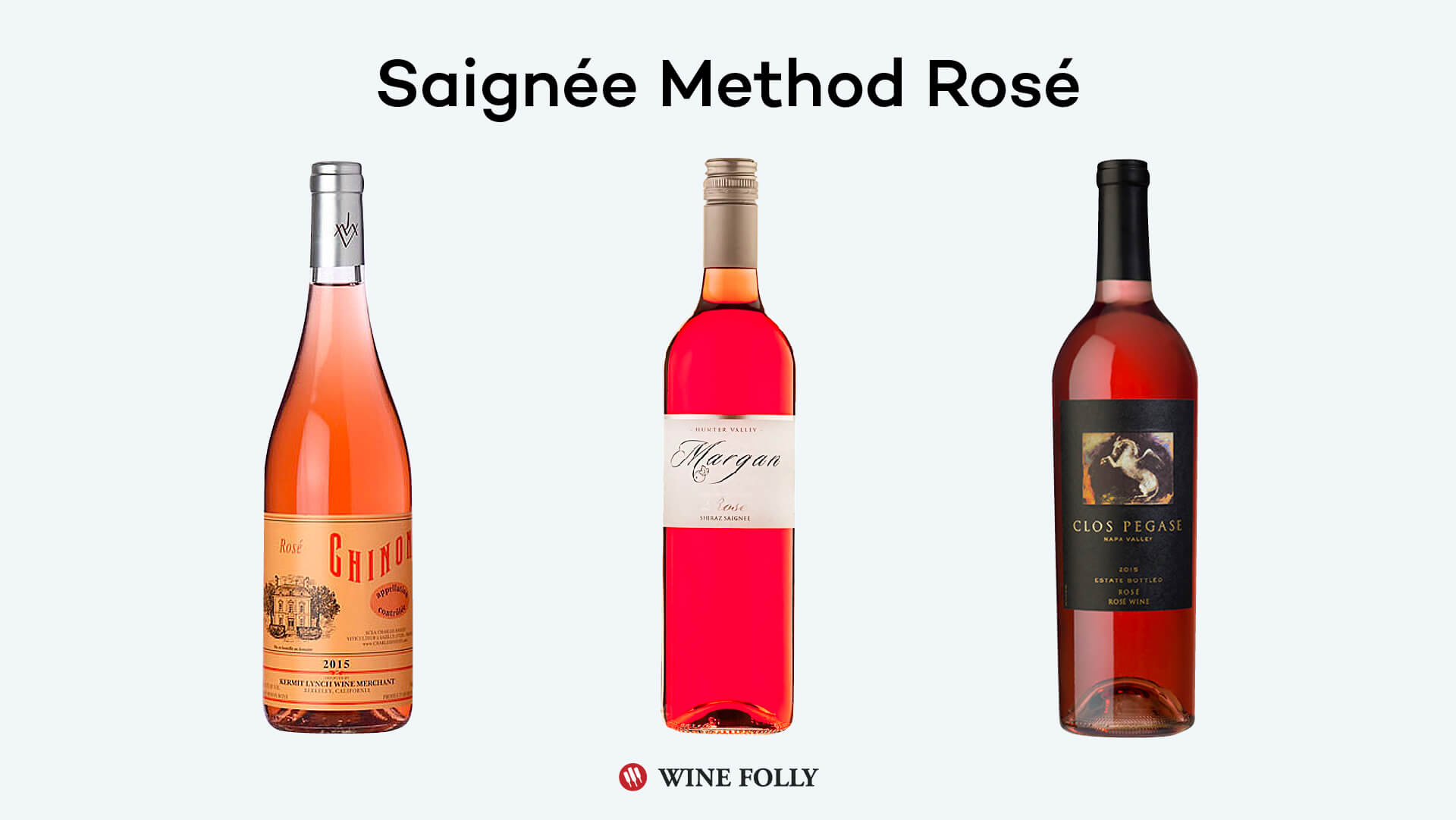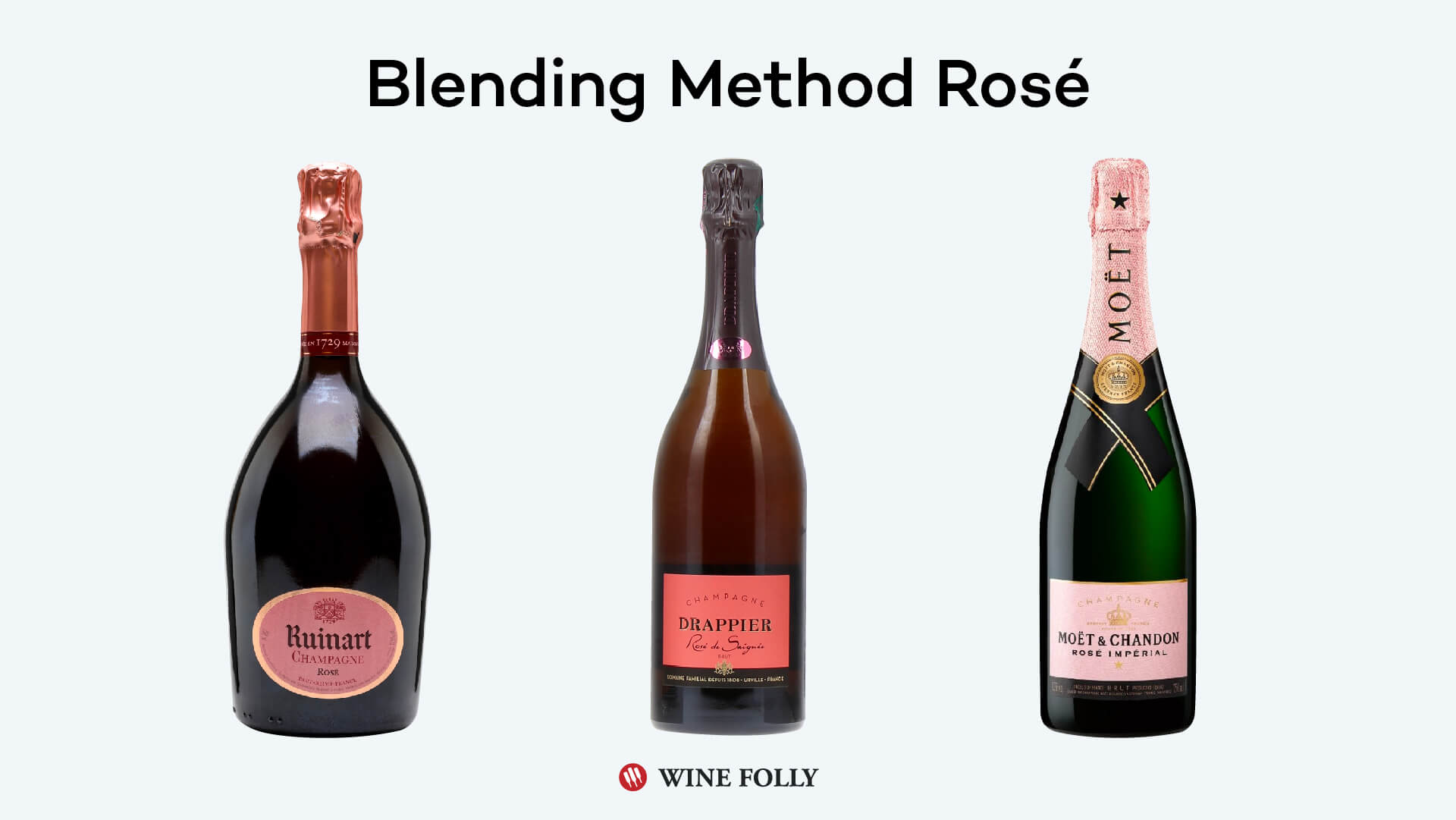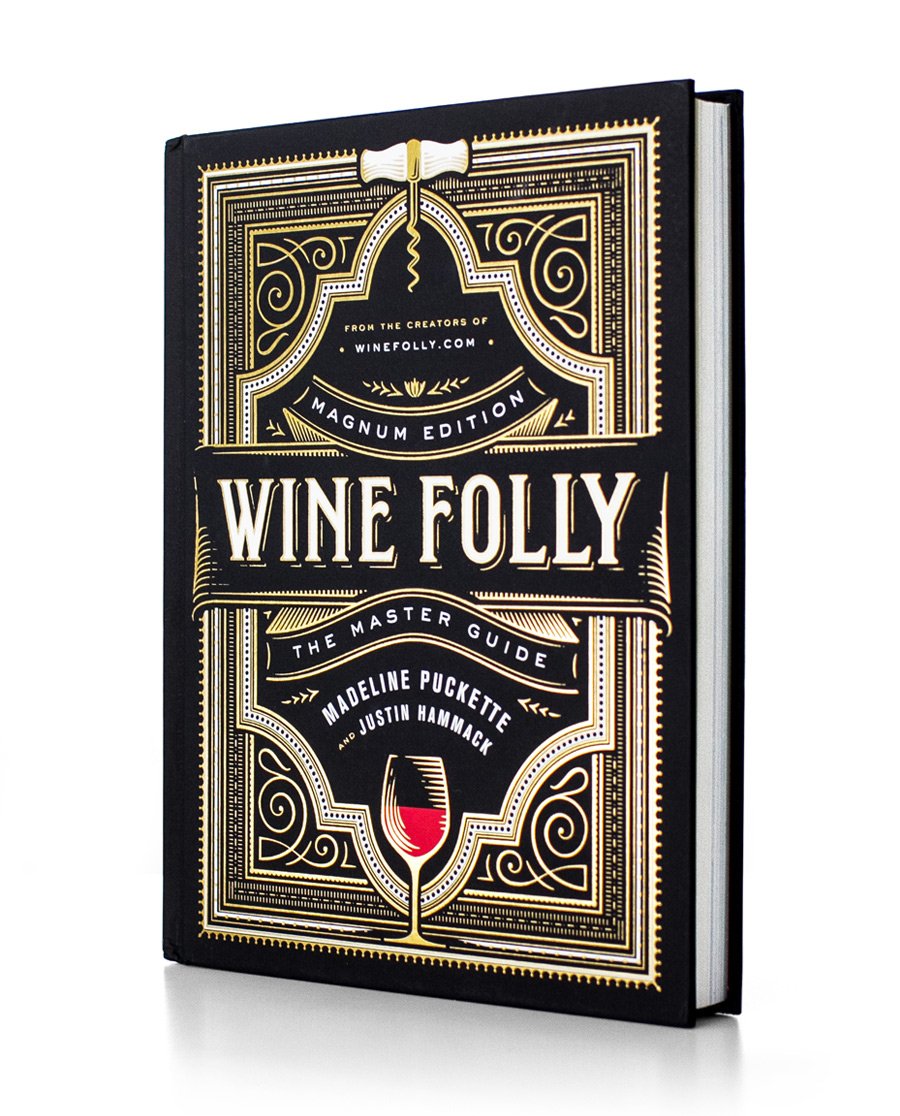Pink wine happily spans the colorspace between red and white wine, in a way, rosé is more like a state of mind.
Rosé happens when the skins of red grapes touch wine for only a short time. Where some red wines ferment for weeks at a time on red grape skins, rosé wines are stained red for just a few hours.
The winemaker has complete control over the color of the wine, and removes the red grape skins (the source of the red pigment) when the wine reaches the perfect color.
As you can imagine, nearly any red wine grape (from Cabernet Sauvignon to Syrah) can be used to make rosé wine, however there are several common styles and grapes that are preferred for rosé.
Tasting Rosé Wine
The primary flavors of rosé wine are red fruit, flowers, citrus, and melon, with a pleasant crunchy green flavor on the finish similar to celery or rhubarb. Of course, depending on the type of grape the rosé wine is made with will greatly vary the flavor.
For example, a deeply-colored Italian Aglianico rosé–rosé is called “Rosato” in Italy,– will offer up cherry and orange zest flavors, and a pale-colored Grenache rosé from Provence in France will taste of honeydew melon, lemon and celery.
How is Rosé Wine Made
There are 3 primary ways to make rosé wine and the most common way is illustrated in the graphic below.


Maceration Method
The maceration method is when red wine grapes are let to rest, or macerate, in the juice for a period of time and afterward the entire batch of juice is finished into a rosé wine. This produces darker colored wine with richer flavor.
The maceration method is the probably the most common type of rosé we see available and is used in regions like Provence and Languedoc-Roussillon, France where rosé is as important as red or white wine.
TIP: Rosé wines touch red grape skins for around 2–20 hours.

Saignée or “Bled” Method
The Saignée (“San-yay”) method is when during the first few hours of making a red wine, some of the juice is bled off and put into a new vat to make rosé. The purpose of bleeding off the juice not only produces a lovely rosé but it also concentrates the red wines’ intensity.
Saignée wines are pretty rare, due to the production method and often will make up only about 10% or less, of a winery’s production. This method is very common in wine regions that make fine red wines such as Napa and Sonoma.

Blending Method
Producing a wide range of light to heavier wines, the blending method is when a little bit of red wine is added to a vat of white wine to make rosé. It doesn’t take much red wine to dye a white wine pink, so usually these wines will have up to 5% or so, of a red wine added.
This method is very uncommon with still rosé wines but happens much more in sparkling wine regions such as Champagne.
An example of a very fine wine made with this technique is Ruinart’s rosé Champagne, which is primarily Chardonnay with a smidgen of red Pinot Noir blended in.

The Biggest and Best Guide on Wine
Since the first edition, we rebuilt Wine Folly from the ground up – with over 2x the content. This is your quick reference guide to wine, whether you’re just getting started or an industry professional.
